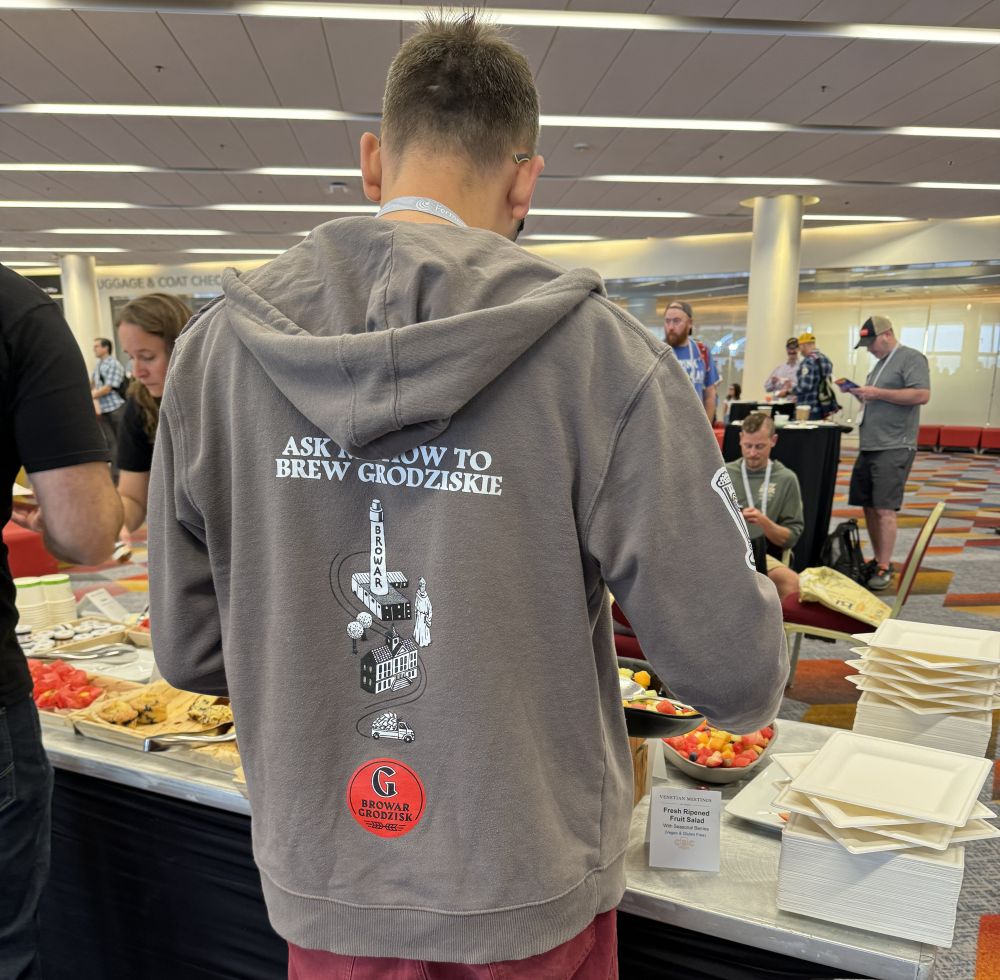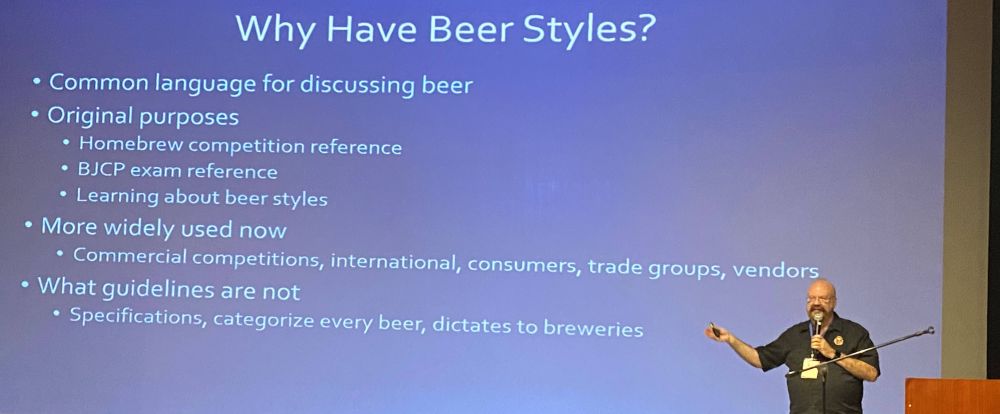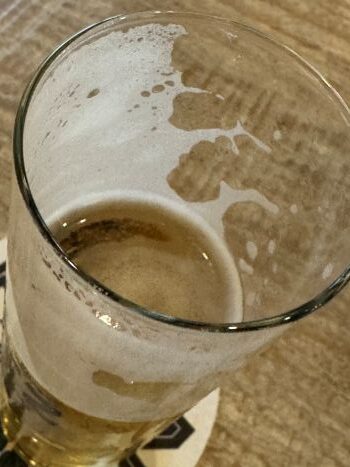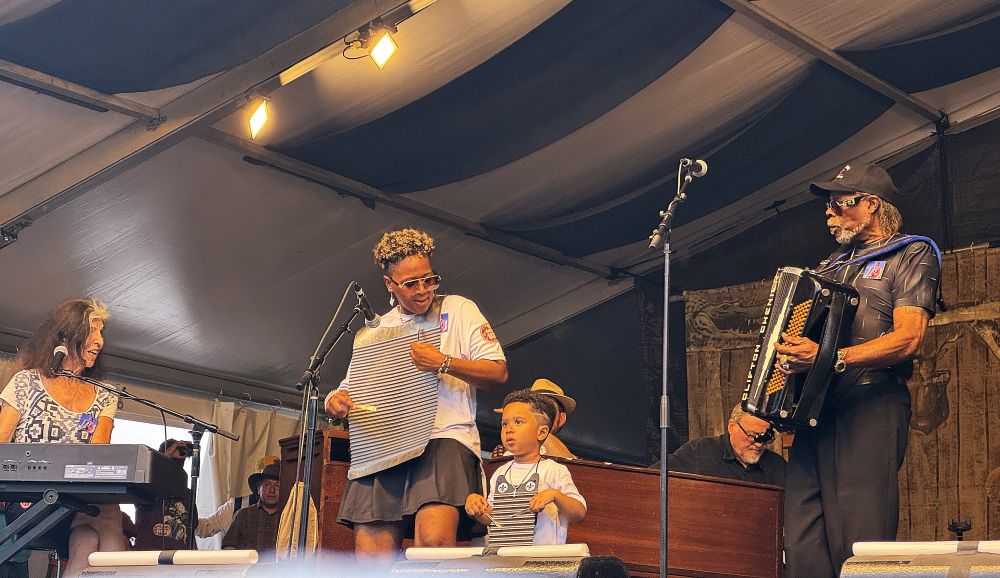
That’s Marcin Ostajewski of Browar Grodziskie in line for breakfast at the 2024 Craft Brewers Conference in Las Vegas. In a little more than two weeks he and brewery president Krzysztof Panek will be talking about all things Grodziskie in Utrech, the Netherlands, during Carnivale Brettanomyces. The “yearly wild beer festival dedicated to deviant fermentation of all kind” is, in fact, about more than oddball fermentation.
The headline here hints of how diverse the talks will be, so I will leave you to explore the entire list on your own. These sorts of gatherings and exchanges of ideas are how beer culture avoids turning into the monoculture American beer seemed to be headed for in the 1970s.
One example, Aiden Jönsson’s examination of beer and the Gaia hypothesis: “Take a sip of beer and you will notice aromas and flavors that remind you of the world around you. Some of these play crucial roles in our physical environment by interacting with the atmosphere, oceans, and geology. We will explore some of the ways common compounds in beer reflect natural processes in our environment and climate, and how life could have evolved to use those compounds to regulate the environment to its benefit in Gaian ways.”
Bet you wish you could be there.



